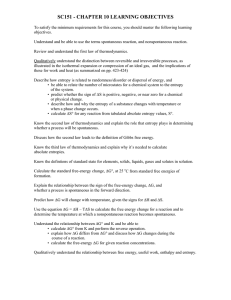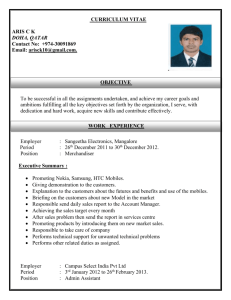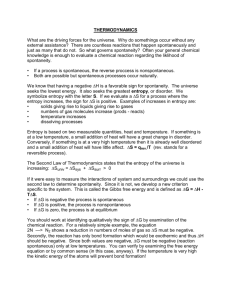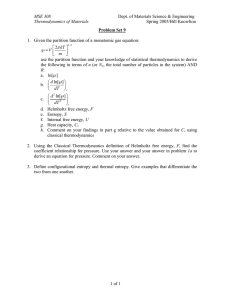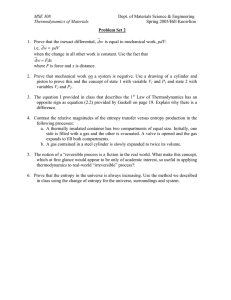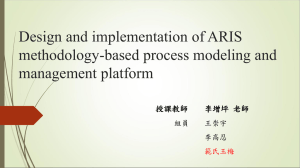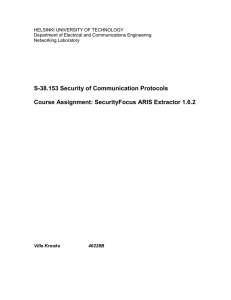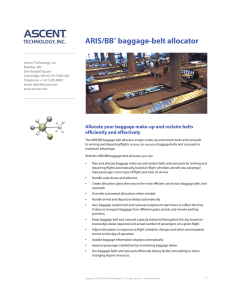CHAPTER 18 LEARNING OBJECTIVES
advertisement
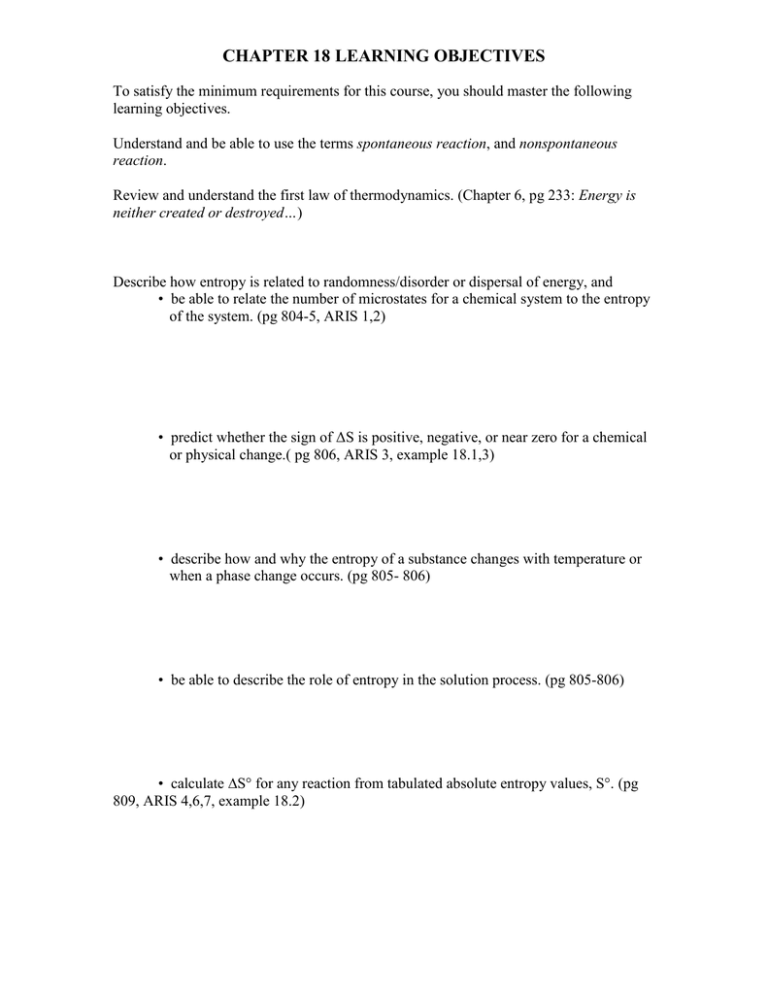
CHAPTER 18 LEARNING OBJECTIVES To satisfy the minimum requirements for this course, you should master the following learning objectives. Understand and be able to use the terms spontaneous reaction, and nonspontaneous reaction. Review and understand the first law of thermodynamics. (Chapter 6, pg 233: Energy is neither created or destroyed…) Describe how entropy is related to randomness/disorder or dispersal of energy, and • be able to relate the number of microstates for a chemical system to the entropy of the system. (pg 804-5, ARIS 1,2) • predict whether the sign of ΔS is positive, negative, or near zero for a chemical or physical change.( pg 806, ARIS 3, example 18.1,3) • describe how and why the entropy of a substance changes with temperature or when a phase change occurs. (pg 805- 806) • be able to describe the role of entropy in the solution process. (pg 805-806) • calculate ∆S° for any reaction from tabulated absolute entropy values, S°. (pg 809, ARIS 4,6,7, example 18.2) Know the second law of thermodynamics and explain the role that entropy plays in determining whether a process will be spontaneous. (pg. 808-812, ARIS 5: Entropy of the Universe is increasing…) Know the third law of thermodynamics and explain why it’s needed to calculate absolute entropies. (pg. 812-813: Entropy of a perfect crystal is zero at…) Discuss how the second law leads to the definition of Gibbs free energy. (pg 814-815) Know the definitions of standard state for elements, solids, liquids, gases and solutes in solution. (pg 807, 253) Calculate the standard free-energy change, ∆G°, at 25 oC from standard free energies of formation. (pg 810 example 18.4) Explain the relationship between the sign of the free-energy change, ∆G, and whether a process is spontaneous in the forward direction. (pg 817-818, Table 18.3) Predict how ∆G will change with temperature, given the signs for ∆H and ∆S. (pg. 818, ARIS 8) Use the equation ∆G = ∆H – T∆S to calculate the free energy change for a reaction and to determine the temperature at which a nonspontaneous reaction becomes spontaneous. (pg. 818-819, ARIS 9,10,11,12,13) Understand the relationship between ∆G° and K (pg 821-823) and be able to • calculate ∆G° from K and perform the reverse operation. (Example 18.6,7, ARIS 14,15,16,17,18) • explain how ∆G differs from ∆G° and discuss how ∆G changes during the course of a reaction.(pg. 822) • calculate the free-energy ∆G for given reaction concentrations. (example 18.8) Understand the meaning of the Key Words on page 828.

